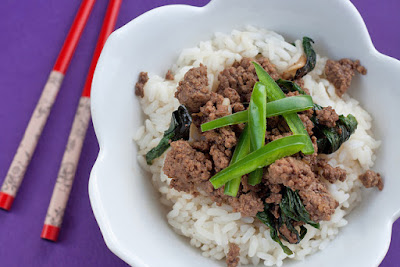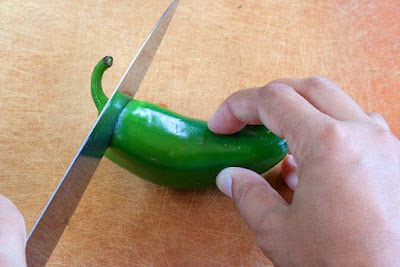My mom is a sorcerer in the kitchen. She uses spices like potions, never measuring anything out. A pinch of turmeric goes here. A palm full of coriander goes there. Then she tosses in a little bit of cardamom. Thanks to her culinary prowess, we sit down to an enchanting array of dishes - Beef Cutlets, Chicken Biryani, Mung Bean Pudding - that seem to have magically appeared.
When I started recreating my mom's recipes, I was surprised to find that there was one ingredient I could never leave out: chili peppers. They add spunk to curries, stir-fries, and casseroles, but more importantly they bring out the flavor of other ingredients, like a good team player. Any time I excluded them, a dish would fall flat. If you're sensitive to heat, use the tips below to dial it back. Affordable and available year-round, I suggest you keep a steady supply in the kitchen.
How to Select
When I started recreating my mom's recipes, I was surprised to find that there was one ingredient I could never leave out: chili peppers. They add spunk to curries, stir-fries, and casseroles, but more importantly they bring out the flavor of other ingredients, like a good team player. Any time I excluded them, a dish would fall flat. If you're sensitive to heat, use the tips below to dial it back. Affordable and available year-round, I suggest you keep a steady supply in the kitchen.
How to Select
How to Remove the Seeds and Inner Tissue
Chili peppers get their kick from capsaicin, a chemical concentrated in the spongy inner tissue and seeds. Since capsaicin has an irritating affect, avoid touching any part of your face (especially your eyes) when prepping chili peppers. If you have sensitive skin, be sure to wear gloves. During clean-up, carefully wash your hands and kitchen equipment with soapy water to cleanse away any capsaicin that may linger behind.
Chili peppers can be prepped with the capsaicin-laden tissues and seeds intact. If you want to dial down the heat, use these simple steps to remove them:
Thoroughly wash and dry the chili pepper. Lay it on its side on a cutting board and use a chef’s knife to slice off the stem end.
Slice the chili pepper in half lengthwise.
Place one half of the chili pepper on the cutting board with the cut side
facing up. Slide the tip of the knife under the tissue and carefully cut it
away from the inner wall of the chili pepper without cutting through the flesh.
Use your fingers or the tip of the knife to scrape out the seeds.
How to Chop
Lay one half of the trimmed, deseeded chili pepper on a cutting board skin side down. Cut it in thick slices lengthwise.
Rotate the slices 90 degrees and cut across them widthwise.
Use your fingers or the tip of the knife to scrape out the seeds.
How to Chop
Lay one half of the trimmed, deseeded chili pepper on a cutting board skin side down. Cut it in thick slices lengthwise.
Rotate the slices 90 degrees and cut across them widthwise.
How to Julienne
Lay one half of the trimmed, deseeded chili pepper on a cutting board skin side down. Cut it in thin slices lengthwise.
How to Mince
Lay one half of the trimmed, deseeded chili pepper on a cutting board skin side down. Cut it in thin slices lengthwise In culinary school, this is called a julienne.
Rotate the slices 90 degrees and cut across the slices widthwise.
Lay one half of the trimmed, deseeded chili pepper on a cutting board skin side down. Cut it in thin slices lengthwise.
How to Mince
Lay one half of the trimmed, deseeded chili pepper on a cutting board skin side down. Cut it in thin slices lengthwise In culinary school, this is called a julienne.
Rotate the slices 90 degrees and cut across the slices widthwise.












No comments:
Post a Comment
Share your thoughts!